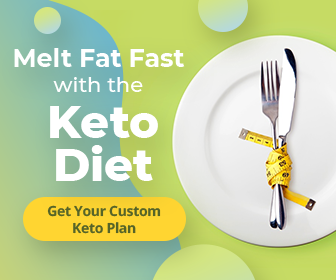Despite what many people feel is a fad diet, the ketogenic diet does not appear to be going anywhere. From fighting autoimmune diseases, to fighting cancer, to losing weight, this is a ‘trend’ that has proven to have staying power. We will briefly explain the different types of keto diets, and how you can figure out which one is the best option for you.

What Are The Advantages Of Keto Diets?
Most people who try the keto diet do so for the weight loss benefits. In several studies, those who categorized as ‘obese’, and were placed on a low carbohydrate diet, lost more weight those who were placed on a low-fat diet.
Other benefits to being on the keto diet are:
- Clearer skin
- Improved mental clarity
- More energy
Since the body is no longer running on carbohydrates, but on fat, the body releases fewer free radicals and reactive oxygen. This results in lower chronic inflammation in the body.
With that being said, the following are several types of keto diets that you can choose from.
Strict Keto
This type of keto diet is often used as a treatment for epilepsy. When someone mentions that they are following ‘strict keto’, this is likely the type of diet they are referring to.
Also known as ‘therapeutic’ keto, this is the first version of the diet. It was created in the early 1900s as a way to minimize the amount of seizures a person with epilepsy had. In fact, it was originally created to treat epileptic patients who were not responding to their medication.
This is the version of keto that allows a person to consume the lowest amount of carbohydrates. 90 percent of daily calories are consumed in the form of fat, 6 percent of calories are consumed in the form of protein and only 4 percent of calories are consumed in the form of carbohydrates.
Standard Keto
This approach to the keto diet is the most common and it involves a dieter getting around 70 to 75 percent of their calories from fat, around 20-25 percent from protein and 10 percent or less calories from carbohydrates.
With these macros, this translates to only around 20 to 30 g (grams) of carbohydrates each day. This form of keto is best for those who are looking for quick weight loss and other health benefits.
High-Protein Keto
With this type of keto, dieters slightly increase their intake of protein. Protein sources should be animal-based and plant-based. If choosing this form of keto, include meat, dairy, fish, seeds and nuts into your diet because protein will account for up to 30 percent of your daily calories.
High-protein keto is designed for those who are looking to protect their muscle mass from breaking down. This makes it ideal for bodybuilders and seniors.
Lazy Keto
The primary goal of this type of keto diet is to help make this way of eating simpler for dieters. There are many people who do not want to track macros or calories. With lazy keto, the only thing that you will need to keep track of is your carb intake.
Many who choose this version see the same results as those on standard keto, as long as they stay within their carb range and they do not consume too much protein.
Before choosing any of the different types of keto diets, you should consult with your registered dietitian or physician. Always pay attention to your body, your energy levels and the way you feel while on the diet.
